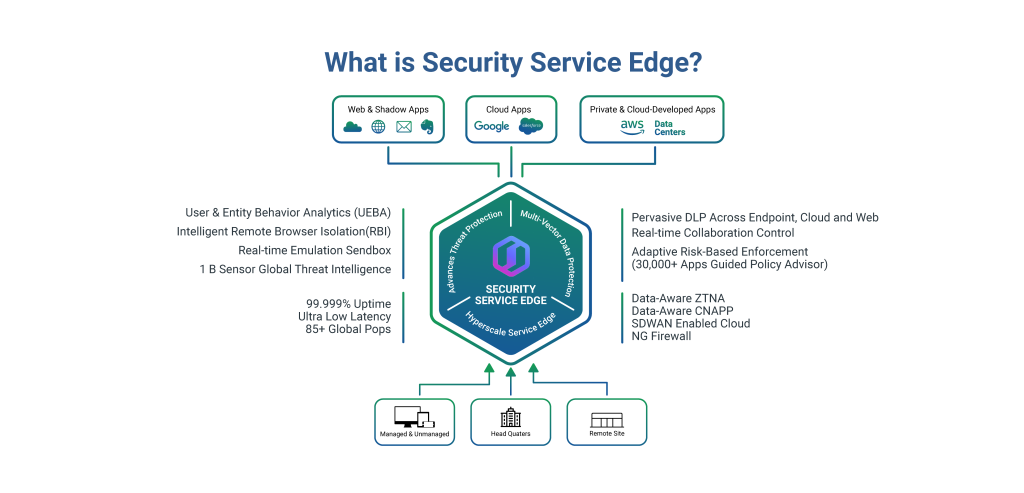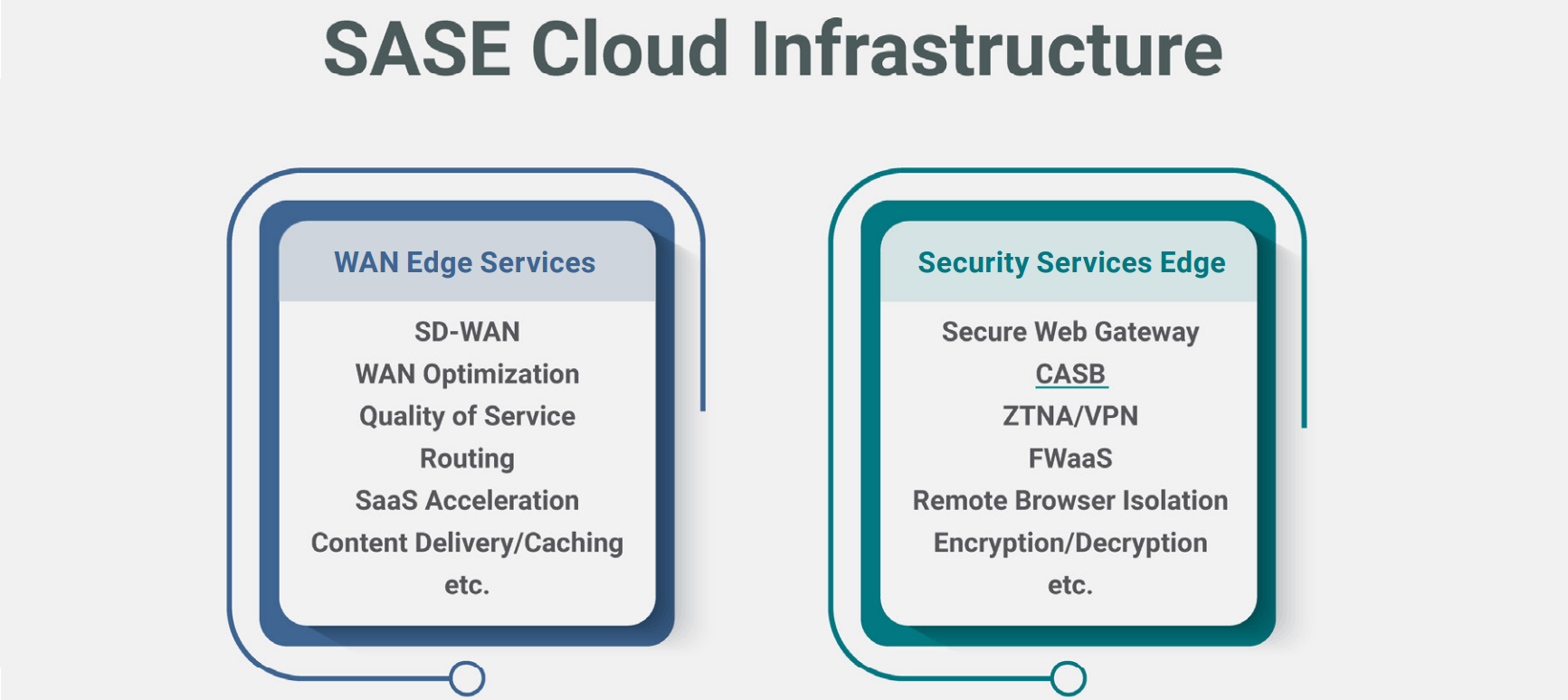As technology trends in network security are increasingly focused on managing the global threat surfaces, lets discuss how SSE is playing an important role in defending IT Security.
What is SSE?
SSE is a collection of integrated, cloud-centric security capabilities that enables safe access to web, SaaS applications and private applications. Security Service Edge (SSE) is an emerging cybersecurity concept introduced by Gartner in 2021. SSE can be considered a subset of the secure access service edge (SASE) framework.
With the trend of hybrid work culture, utilization of SaaS applications is increasing, private and vendor applications are moving to the public cloud, due to this changing model, IT stakeholders are interested in moving to the latest network security methods to protect their data, improve the user experiences and optimize IT costs. As a result, SSE platforms is the solution to the modern need of IT giants to ensure network security.
Role of SSE
The role of SSE is vital in the organizations where security is crucial. A combination of SSE provides end-to-end security to protect the networks from partners, vendors, employees, and external users from accessing the data, applications, and resources. As the remote and hybrid work culture continue, SSE ensures the data, applications accessed by the users in remote, mobile and hybrid modes remain protected.
To reduce risk, organizations need a security platform that integrates endpoint with SSE, which integrates UEBA, Advanced DLP, Enterprise Digital Rights Management (EDRM) and Zero Trust to ensure data security during the business transactions.

SSE Core Services

Core Services of Security Service Edge
- Zero Trust Network Access (ZTNA) – Restricts access to internal applications and devices for the users based on the roles and responsibilities. Enforcing the principle of Zero Trust least Privilege, ZTNA of SSE focuses on the Identity and Access Management (IAM) by using the key pillars of Single Sign on (SSO) and Multi Factor Authentication (MFA). ZTNA also enforce the granular access. Since it focuses on which user can access what resources with required governance, it helps reducing the threat surface from the cyber attacks
- Cloud Access Security Broker (CASB) – CASB works as a form of cloud-based security. CASB focuses on tracking data transfer from one cloud environment to another. The integrated CASB API based system communicates between the various applications commonly utilized by SSE networks. The benefit of using CASB is that it is easy to update, and its integration capabilities with new SaaS programs as they are introduced. CASB is a must for SSE.
- Cloud Secure Web Gateway (SWG) – SWG protects users from external threats and enforces the organizational policies. It is responsible for directing the users to the desired web URLs and perform actions such threat monitoring, URLs filtering, web visibility, access control and other security defence mechanisms.
- Firewall-as-a-service (FWaaS) – FWaaS protects cloud-based data and applications and ensures the firewalls are delivered in the Entity. FWaaS provides reliable apps and security enforcement policies across all the locations and the users. SSE uses FWaaS features to tune the network traffic from multiple sources (Mobile, datacentres, Cloud, and branch offices).
Difference between SASE and SSE
SSE is a subset of SASE, where the SASE provides the combination of Networking and security, but SSE provides security of SASE. SSE combined with SD-WAN forms a comprehensive SASE platform.

Benefits of SSE
- Improves visibility and Control
- Protect business critical data and Identities
- Secures cloud and web
- Proactive mitigation of threats
- Increased flexibility
- Cost reduction
SSE and SASE are just frameworks. It’s up to the organizations to find a vendor that suits their requirements. Organizations could evaluate the vendors for each of the above services of SSE for deployments and solutions.
About the Author –

Sundaramoorthy
Sundar has more than 13 years of experience in IT, IT security, IDAM, PAM and MDM project and products.
He is interested in developing innovative mobile applications which saves time and money. He is also a travel enthusiast.

